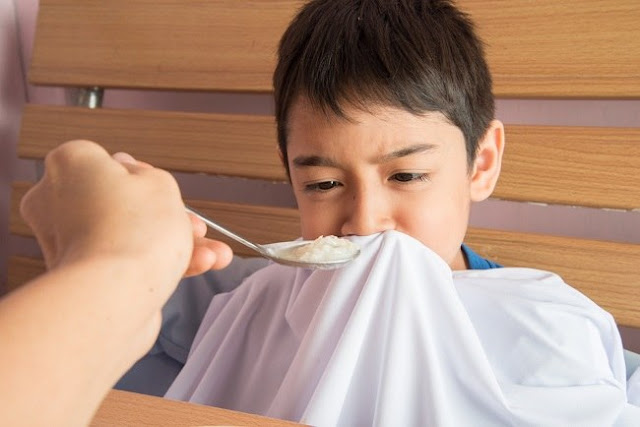In addition to using prescription drugs from doctors, there are several ways to treat tonsils in children that can be done at home. This treatment effort aims to make your baby recover quickly and can return to play with his friends without feeling pain due to inflamed tonsils.
Tonsils or tonsils are one part of the body's defense system whose role is to fight viral and bacterial infections.
However, tonsils can become inflamed if the immune system is weak or the tonsils do not function properly to fight the bacteria and viruses that attack. This condition is called tonsillitis or tonsillitis.
Tonsillitis caused by a virus is usually experienced by children under 5 years. While tonsillitis triggered by bacterial infections many experienced by children aged over 5 years to 15 years.
Recognizing the symptoms of tonsillitis in children
A child who has tonsillitis has not been able to explain the symptoms or complaints they experience. Therefore, as a parent, you need to be aware that your child has tonsillitis if he shows the following symptoms:- Fever
- Restless and more fussy
- Difficulty swallowing
- Decreased appetite
- Sore throat
- The sound is gone
- The ear hurts
- Frequent saliva
- Bad breath
- Snore while you sleep
- Lumps appear in the neck due to swollen lymph nodes
How to Treat Tonsils in Children
As mentioned earlier, handling tonsillitis in children can be done independently at home, according to the cause. Tonsillitis caused by a viral infection will usually heal by itself within 1-2 weeks. Meanwhile, if tonsillitis is caused by a bacterial infection, antibiotics are usually required according to doctor's prescription. However, there are several steps that can be taken to alleviate the symptoms of tonsillitis in children, namely:1. Get plenty of rest
Rest is an effective way to restore the condition of a sick body. When the tonsils become inflamed, make sure your baby gets enough rest at home until the situation improves.2. Consumption of soft foods and warm drinks
Tonsillitis can make a child become less willing to eat. This is because when the tonsils become inflamed, the child will usually feel the pain of swallowing. To work around this, give him soft foods that are easy to swallow, such as soup, porridge, or team rice. In addition, you can also provide warm tea with honey to reduce the discomfort in his throat. However, this method should be done if the child is over 1 year old. Don't give honey to children under 1 year, because it can cause botulism.3. Gargle salt water
For children over the age of 6 years, gargling with salt water can help ease the pain in his throat. The trick, enter 1 teaspoon salt into 1 glass of warm water, then stir until smooth. Tell your child to gargle with the solution for a few seconds, then remove the water from the mouth.4. Improve air quality
Creating good air quality at home is also important to help deal with tonsil inflammation. When a child experiences tonsillitis, as much as possible keep him away from exposure to pollution, such as dust, cigarette smoke, and vehicle fumes. If necessary, you can use a humidifier to moisturize and clean dirty air. For tonsils that do not improve with home care or tonsils that last a long time, often recur, causing shortness of breath, sleep apnea, or airway obstruction, treatment with tonsillitis may be needed. If your child's condition does not improve after 2-3 days being treated at home or there are signs above, immediately consult your child to the doctor to get further treatment.- Dermaga Apung HDPE
- Toko Bunga Surabaya
- Sewa Bus Surabaya
- Jual Kayu Kaso
- Sewa Mobil Mewah
- Sewa Alat Berat
- Jual Speed Boat Aluminium
- Kirim Mobil Manado Jakarta
- Dermaga Apung Aluminium
- Rental Sewa Laptop Printer
- Jual Kayu Dolken Gelam
- Cetak Kalender Murah
- Jual Speedboat Fiberglass
- Paket Wisata Yogyakarta
- Jual Kapal Aluminium Penumpang
- Kubus Apung HDPE
- Tempat Sunat Semarang
- Jual Jam Masjid
- Dermaga Apung Marina
- Jasa SEO Murah
- Jual Mobil Murah
- Harga Bata Ringan
- Jual Karpet Masjid
- Jual Kapal Fiberglass
- Jasa Interior Surabaya
- Toko Karangan Bunga Gresik

Komentar
Posting Komentar